
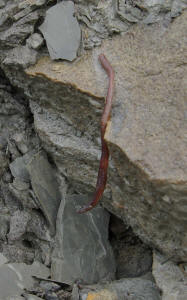
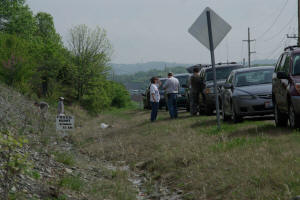
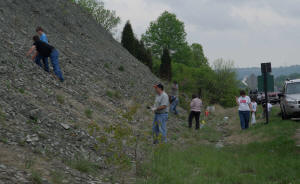
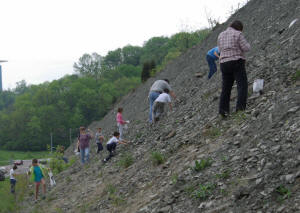
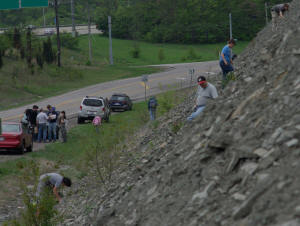

The April field trip was to a site that we like to hit in the spring, when the freezes and thaws of winter have broken rocks and washed away the gray Ordovician clay leaving the heavier carbonate fossils behind. The site is just a short drive from downtown Cincinnati. It exposes the Southgate member of the Latonia (Kope) Formation.







Best Finds of Day
I think the best find of the day was this Meadowtownella
crosotus on a slab of limestone. The head may be under the hard
calcified rock, so it will be hard to expose. Very nice find, though.
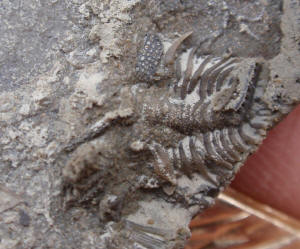
Most members, whether they knew it or not (if you've been in
the Dry Dredgers at least few year, you knew it.) found parts of Meadowtownella
crosotus. Notice in the second pic below, how one of the spines is
encrusted with Bryozoans. A study of Ontopleurid
trilobite epizoans (attachments) is needed! (hint to the professionals.) Dry
Dredgers often supply specimens to professional paleontologists for their papers
and studies.
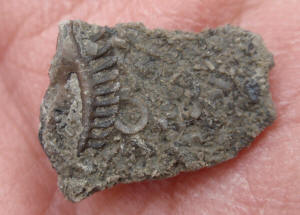
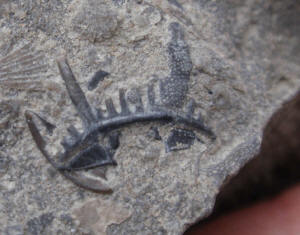

But the more common trilobite on this site, which is mostly
limited near Cincinnati to the Kope, is the the Lace Collar trilobite, Cryptolithus
tesselatus.

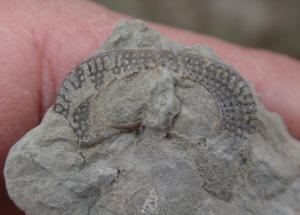
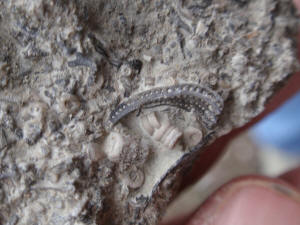
At the meeting the night before, we were prepped for what we might find. The only Dr. John Pojeta Jr. gave a feature presentation on fossil chitons. It is our hope that we will find another chiton in the Cincinnati Ordovician rocks as good as the ONE specimen in existence. John brought that from the museum to the meeting for us to see. (See photos of the April Meeting and John Pojeta's talk).
No one found a fossil chiton unfortunately. Although lots of
living animals were found that bare a bit of a resemblance to them and at some
point in history, a common ancestry (1 photo below).

Trilobite: Flexcicalymene granulosa:
In the Kope formation, the most common species of the common
trilobite Flexicalymene you will find will be the species "granulosa."
Here are some examples found that day.
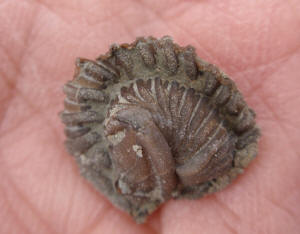
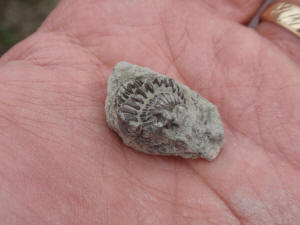
The glabella (face of the head) of Flexicalymene has a classic
shape that can be easily recognized.
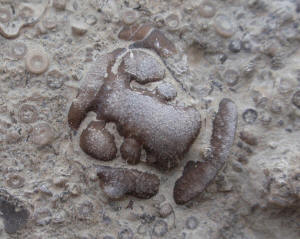
Similarly, the tail section, which is one solid piece called
the pygidium, in unmistakable once you've seen a photo such as the one
below.
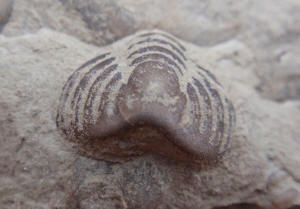
All of these trilobite parts can be found commonly on the
surfaces of rocks in the Kope formation of Cincinnati. Here's a picture of a
typical rock. Can you find the trilobite fragments?
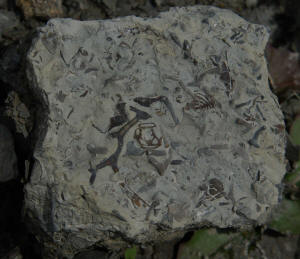
Trilobite: Isotelus
Hypostoma (mouth plate)
Crinoids Found
Cincinnaticrinus

Above photo complements of Bruce Gibson
Probably the best find that day of a Nautiloid Cephalopod was
this curved shelled Nautiloid external mold.
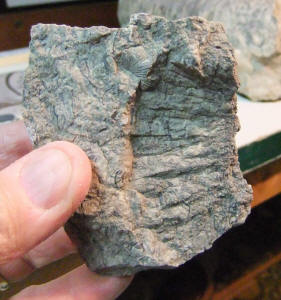
Above photo complements of Bruce Gibson
Other curved shelled Nautilods were found as internal molds.
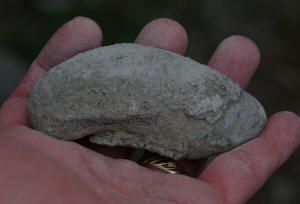
In the Kope exposed at this site, many of the Cephaloopds have
as much brown calcite coloring as the brachiopods, making them very collectable.
The calcite preserves the surface features of the shell and occasionally the
microstructure which makes them very desirable for professional study.
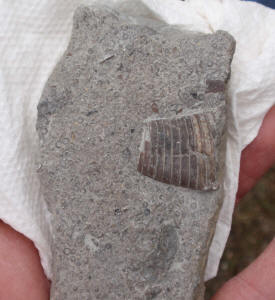
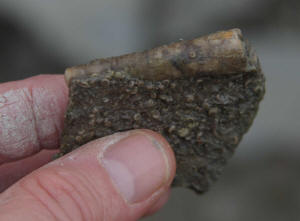
Other Cephalopods are very collectable because they are
encrusted with Bryozoans.
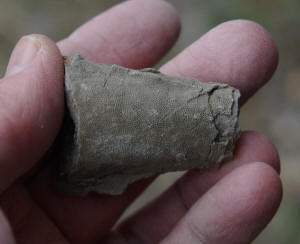

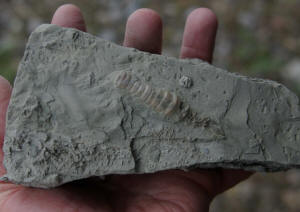
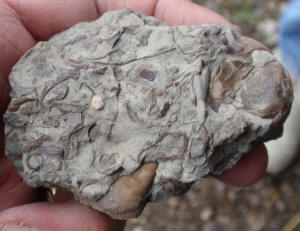
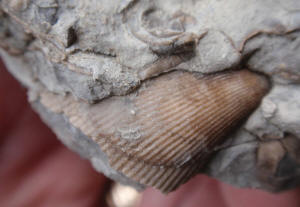
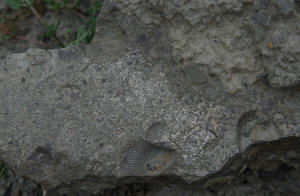
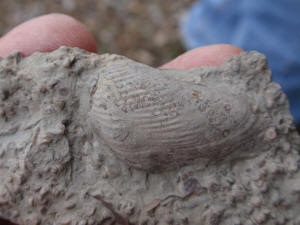
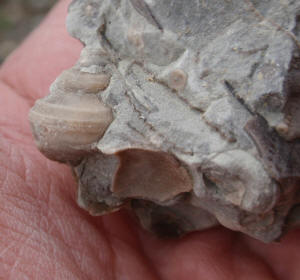
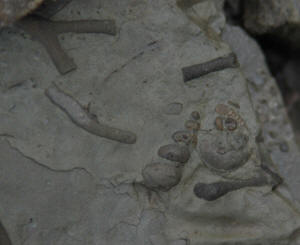
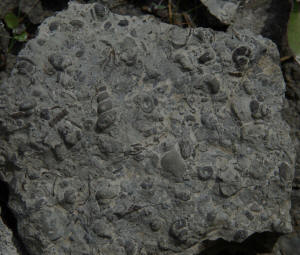
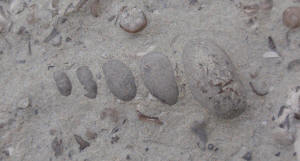
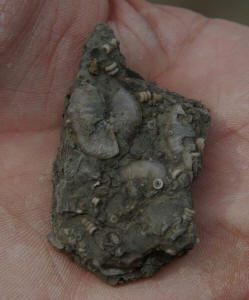
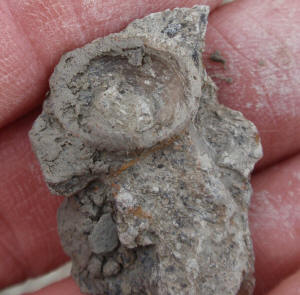
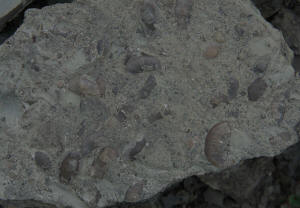
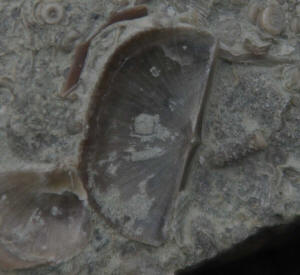
Trace Fossils
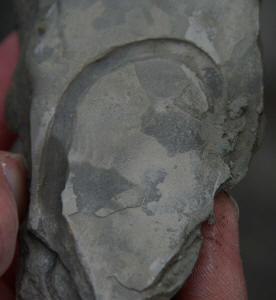
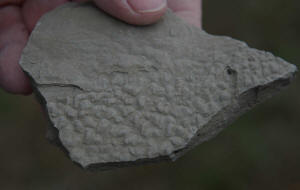
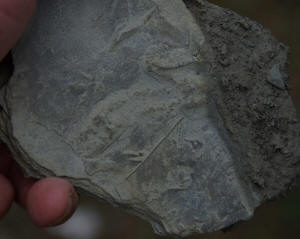
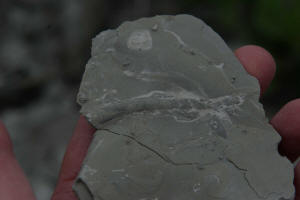

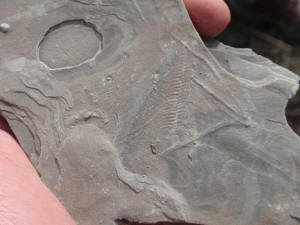
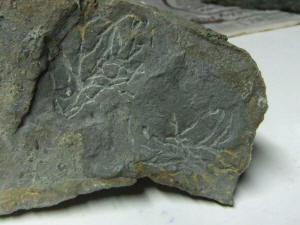
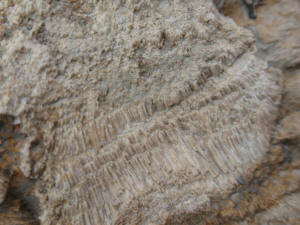
Graptolites
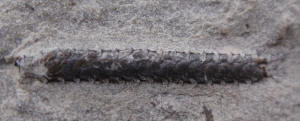
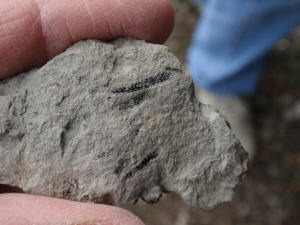
Previous Trips to This Site
Our next field trip is in May 2010 to the famous Caesar Creek, Ohio
Back to Field Trip Photo Index
Return to Dry Dredgers Home Page
The Dry Dredgers and individual contributors reserve the rights to all information, images, and content presented here. Permission to reproduce in any fashion, must be requested in writing to admin@drydredgers.org .